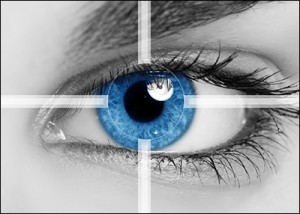Can the Eyes Lie?
By Daniel Stark, Marketing –

The eyes have the potential to tell us if someone is lying, but without the proper tools, people can be mislead by eye behavior.
Ninety-three percent of all body language is nonverbal. The eyes are likely the most powerful source of non-verbal communication. In the film “Scarface,” Al Pachino’s character infamously declares, “The eyes, Chio. They never lie.”
People maintain eye contact in interviews, stare at a secret crush, and are told “not to stare” because conventional wisdom states that eye contact reveals significantly more than words.
Intuition regarding eye communication may begin at birth, as some studies have indicated. When we break eye contact with our mother as a child, we feel it indicates disapproval. Consequently, people associate gaze aversion with negative emotions or actions, such as deceit or fraud.
However, intuition may not be the best source to detect deceit. Human beings are able to instinctively detect deceit with an accuracy of approximately 54 percent.
Blake Eastman, the founder of The Nonverbal Group, agrees that breaking eye contact is a poor way to detect deceit. He indicates that someone might look away because the situation is unnatural or uncomfortable. Sometimes averting the eyes is founded on embarrassment or even shame. Some people simply have a high level of social anxiety. In fact, there are no scientific studies that conclude that lying can be detected by a break in eye contact.
Quantified Impressions, a communications analytics company, determined that most adults establish eye contact between 30 and 60 percent of the time during a conversation. Conventional wisdom concerning the deceptive nature of eye contact aversion causes liars to maintain eye contact. The liar, to avoid people thinking a he or she is lying, will typically maintain eye contact.
Cognitive overload theory is based on the idea that if a person becomes overwhelmed with thinking or feeling, their blink decreases dramatically, leading them to stare more than a normal person. On the other hand, when people tell the truth, they generally don’t have to create ideas to recall the memory, leading to a normal blink rate. Unfortunately, this method of lie detection is not infallible on its own. He claims that if people use memories when deceiving, it decreases the rate of cognitive overload and blinking rate.
Overall, he says that it’s difficult to correlate with a high level of certainty specific human behavior with lying without a little help.
Technology and Lie Detection
With this in mind, what is the best way to handle lying and corruption? It’s clearly necessary to have technological innovation to assist us in fraud detection.
EyeDetect® can help detect deception by monitoring multiple aspects of eye movements with a highly accurate optical scanner. The simple, nonintrusive test consists of a series of true or false questions that the subject answers while their eye movements are tracked and recorded. The system is able to detect deception with 85 percent accuracy. EyeDetect is an eye detection software to help find fraud.

